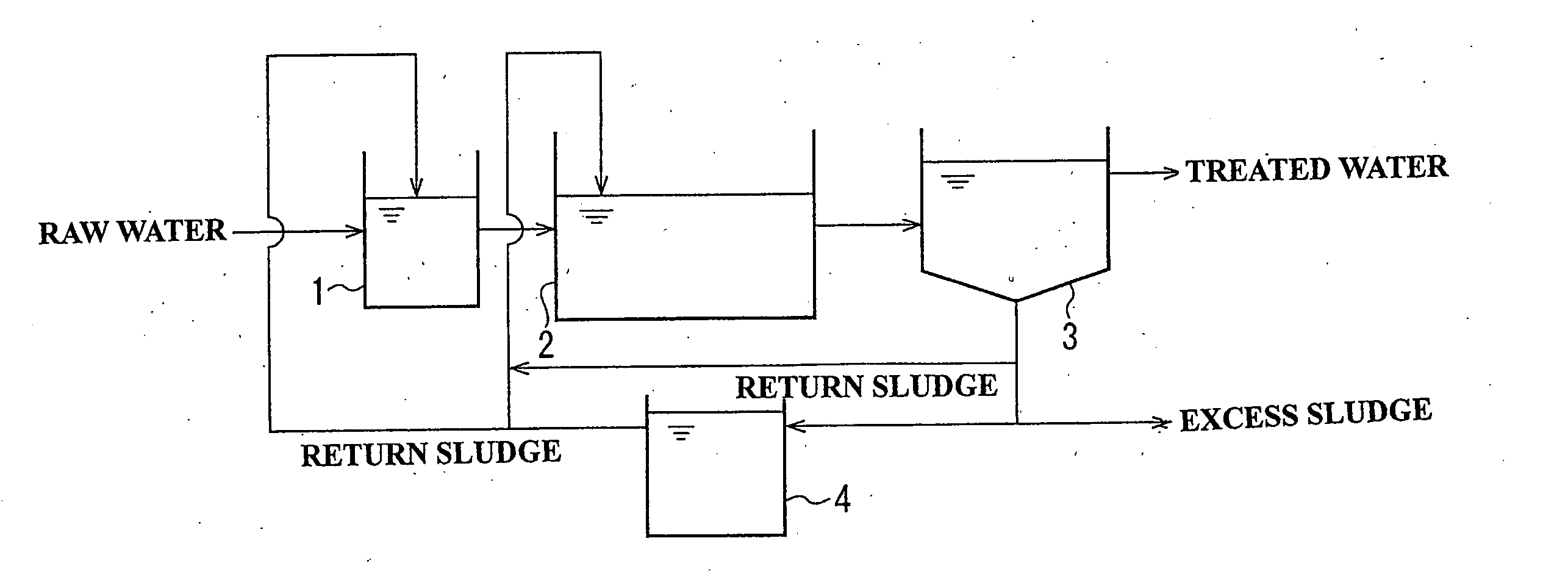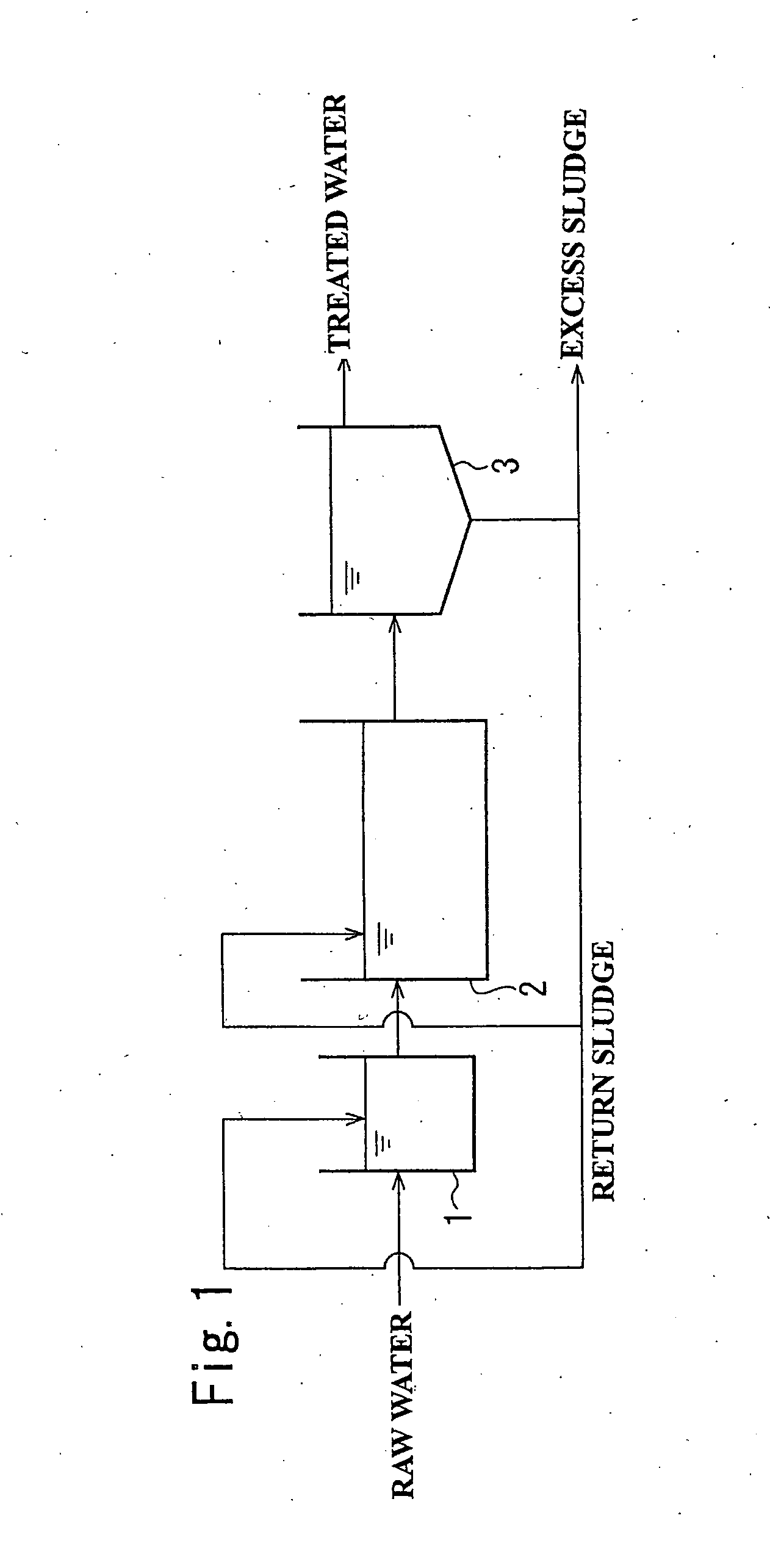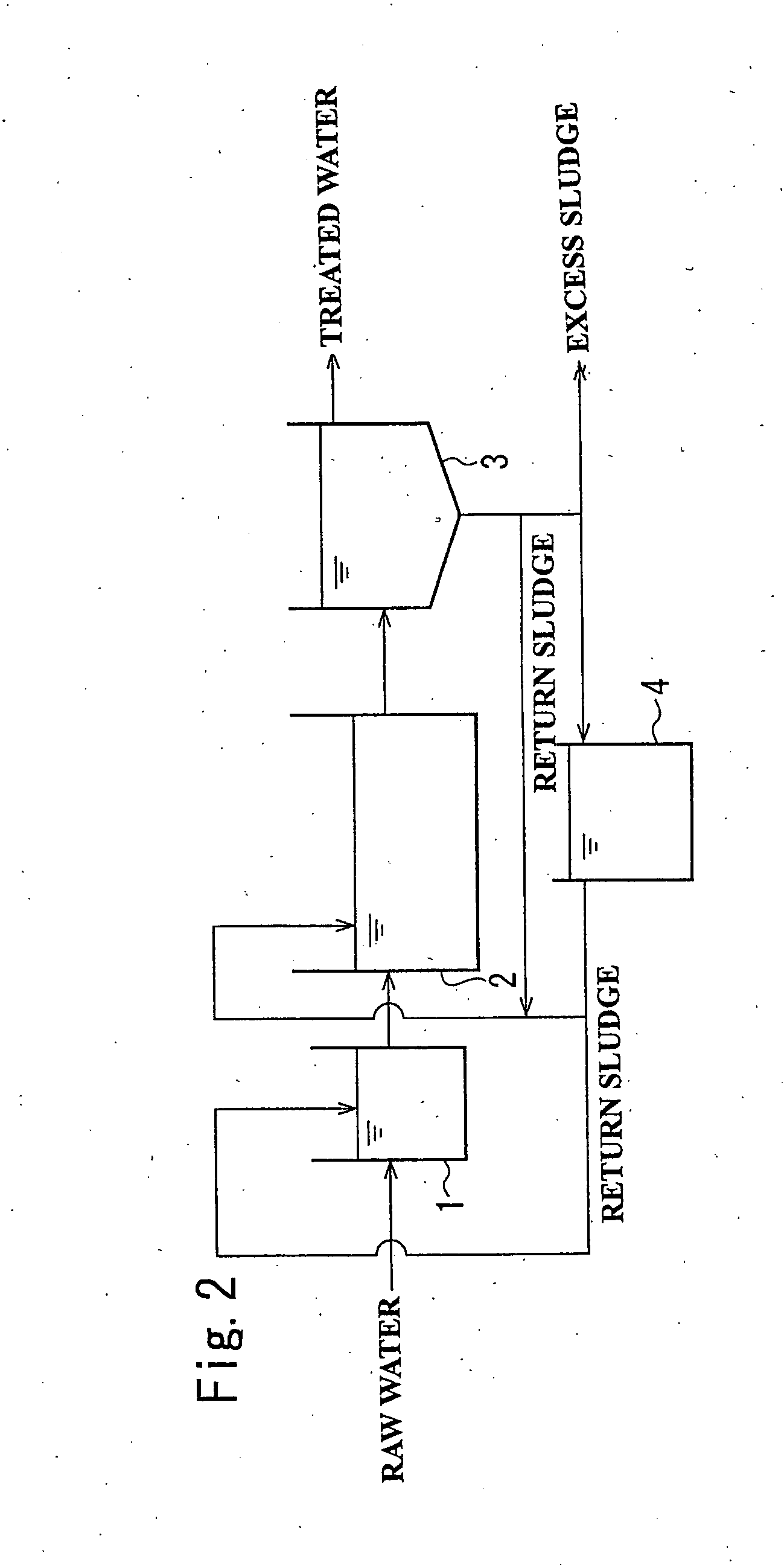Process for biological treatment of organic wastewater and apparatus therefor
- Summary
- Abstract
- Description
- Claims
- Application Information
AI Technical Summary
Benefits of technology
Problems solved by technology
Method used
Image
Examples
example 1
[0081] As shown in FIG. 4a , a treatment of organic wastewater (BOD 630 mg / L) was performed using an experimental apparatus in which an activated sludge tank (not including a sludge return) with a volume of 3.6 L serving as a first biological treatment tank 11 was connected to an immersion-membrane-type activated sludge tank with a volume of 15 L serving as a second biological treatment tank 12. An immersion membrane 12a was provided in the second biological treatment tank 12, and water permeated through the immersion membrane was taken out as treated water.
[0082] The pH of the first biological treatment tank 11 was adjusted to 6.8 and the pH of the second biological treatment tank 12 was adjusted to 5.0.
[0083] Table 1 shows the results four months after the initiation of the experiment. FIG. 5 shows the relationship between the charged BOD and the amount of generated excess sludge (sludge conversion ratio).
[0084] In this example, the operation was performed under the following c...
example 2
[0085] As shown in FIG. 4b , a treatment of organic wastewater (BOD 630 mg / L) was performed using an experimental apparatus in which an activated sludge tank (not including a sludge return) with a volume of 3.6 L serving as a first biological treatment tank 11, an immersion-membrane-type activated sludge tank with a volume of 15 L serving as a second biological treatment tank 12, and an excess sludge treatment tank 13 were connected to each other. As in the apparatus shown in FIG. 4a , an immersion membrane 12a was provided in the second biological treatment tank 12, and water permeated through the immersion membrane 12a was taken out as treated water.
[0086] The pH of the first biological treatment tank 11 and that of the second biological treatment tank 12 were adjusted to 6.8, and the pH of the excess sludge treatment tank 13 was adjusted to 5.0. The sludge in the second biological treatment tank 12 was drained at a rate of 0.5 L / d and was introduced into the excess sludge treatm...
example 3
[0118] As shown in FIG. 6, a treatment of organic wastewater (BOD 630 mg / L) according to the present invention was performed using an experimental apparatus in which a first biological treatment tank (activated sludge tank (without sludge return)) 1 with a volume of 3.6 L, a second biological treatment tank (activated sludge tank) 2 with a volume of 15 L, a sedimentation tank 3, and an anaerobic digestion tank 24 with a volume of 1 L were connected to each other. The pH of the first biological treatment tank 1 was adjusted to 6.8, the pH of the second biological treatment tank 2 was adjusted to 6.8, and the pH of the anaerobic digestion tank 24 was adjusted to 6.0. The operation was performed under the following conditions: In the first biological treatment tank 1, the soluble BOD volume load was 3.85 kg-BOD / m3 / d and the HRT was 4 hours. In the second biological treatment tank 2, the soluble BOD sludge load was 0.022 kg-BOD / kg-MLSS / d and the HRT was 17 hours. As a whole, the BOD vol...
PUM
 Login to View More
Login to View More Abstract
Description
Claims
Application Information
 Login to View More
Login to View More - R&D
- Intellectual Property
- Life Sciences
- Materials
- Tech Scout
- Unparalleled Data Quality
- Higher Quality Content
- 60% Fewer Hallucinations
Browse by: Latest US Patents, China's latest patents, Technical Efficacy Thesaurus, Application Domain, Technology Topic, Popular Technical Reports.
© 2025 PatSnap. All rights reserved.Legal|Privacy policy|Modern Slavery Act Transparency Statement|Sitemap|About US| Contact US: help@patsnap.com



